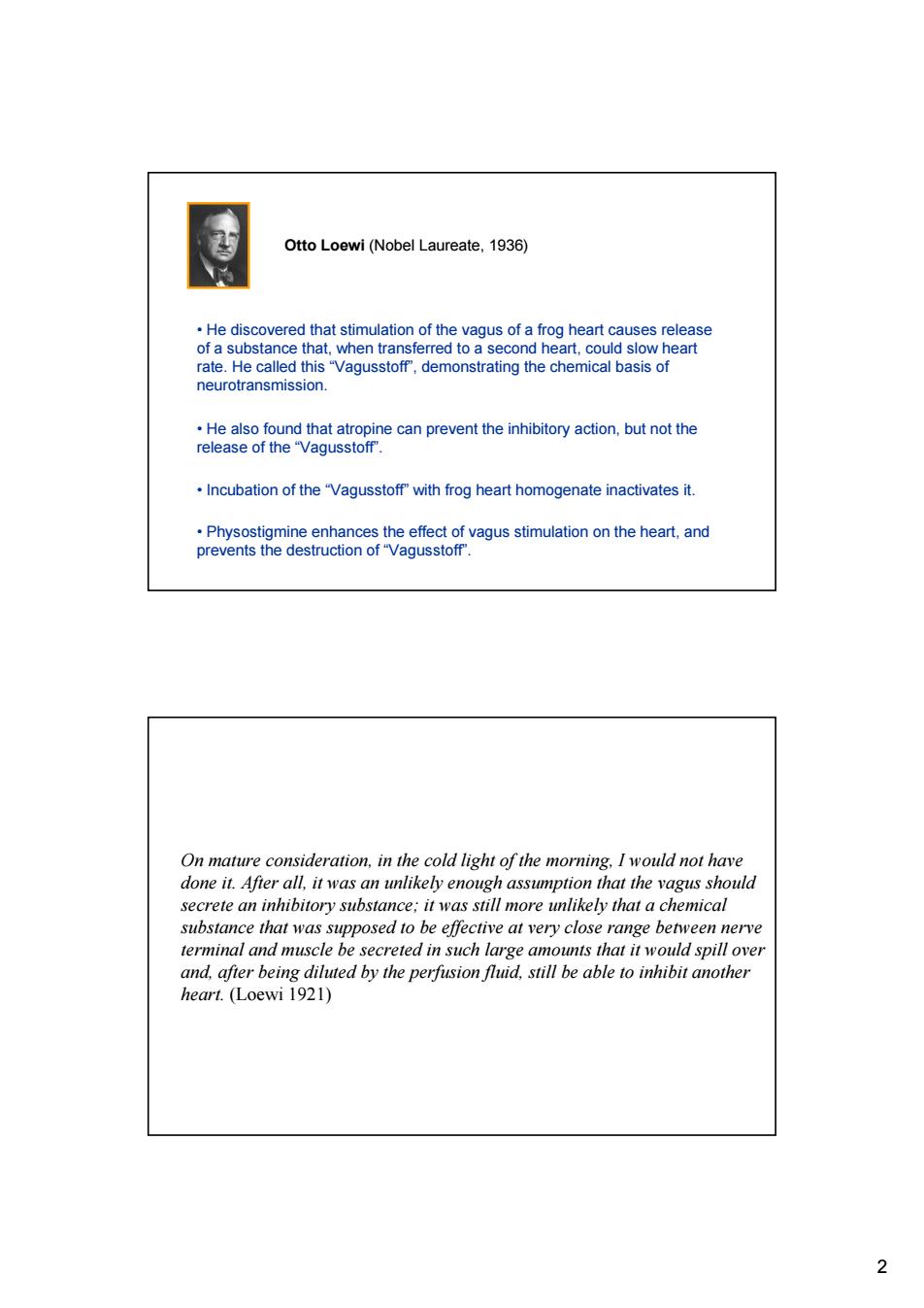正在加载图片...

Otto Loewi(Nobel Laureate,1936) He discovered that stimulation of the vagus of a frog heart causes release of a substance that.when transferred to a second heart,could slow heart rate.He called this"Vagusstoff",demonstrating the chemical basis of neurotransmission. He also found that atropine can prevent the inhibitory action,but not the release of the "Vagusstoff". Incubation of the"Vagusstoff"with frog heart homogenate inactivates it. Physostigmine enhances the effect of vagus stimulation on the heart,and prevents the destruction of"Vagusstoff. On mature consideration,in the cold light of the morning,I would not have done it.After all,it was an unlikely enough assumption that the vagus should secrete an inhibitory substance;it was still more unlikely that a chemical substance that was supposed to be effective at very close range between nerve terminal and muscle be secreted in such large amounts that it would spill over and,after being diluted by the perfusion fluid,still be able to inhibit another heart.(Loewi 1921) 22 • He discovered that stimulation of the vagus of a frog heart causes release of a substance that, when transferred to a second heart, could slow heart rate. He called this “Vagusstoff”, demonstrating the chemical basis of neurotransmission. Otto Loewi (Nobel Laureate, 1936) • He also found that atropine can prevent the inhibitory action, but not the release of the “Vagusstoff”. • Incubation of the “Vagusstoff” with frog heart homogenate inactivates it. • Physostigmine enhances the effect of vagus stimulation on the heart, and prevents the destruction of “Vagusstoff”. On mature consideration, in the cold light of the morning, I would not have done it. After all, it was an unlikely enough assumption that the vagus should secrete an inhibitory substance; it was still more unlikely that a chemical substance that was supposed to be effective at very close range between nerve terminal and muscle be secreted in such large amounts that it would spill over and, after being diluted by the perfusion fluid, still be able to inhibit another heart. (Loewi 1921)